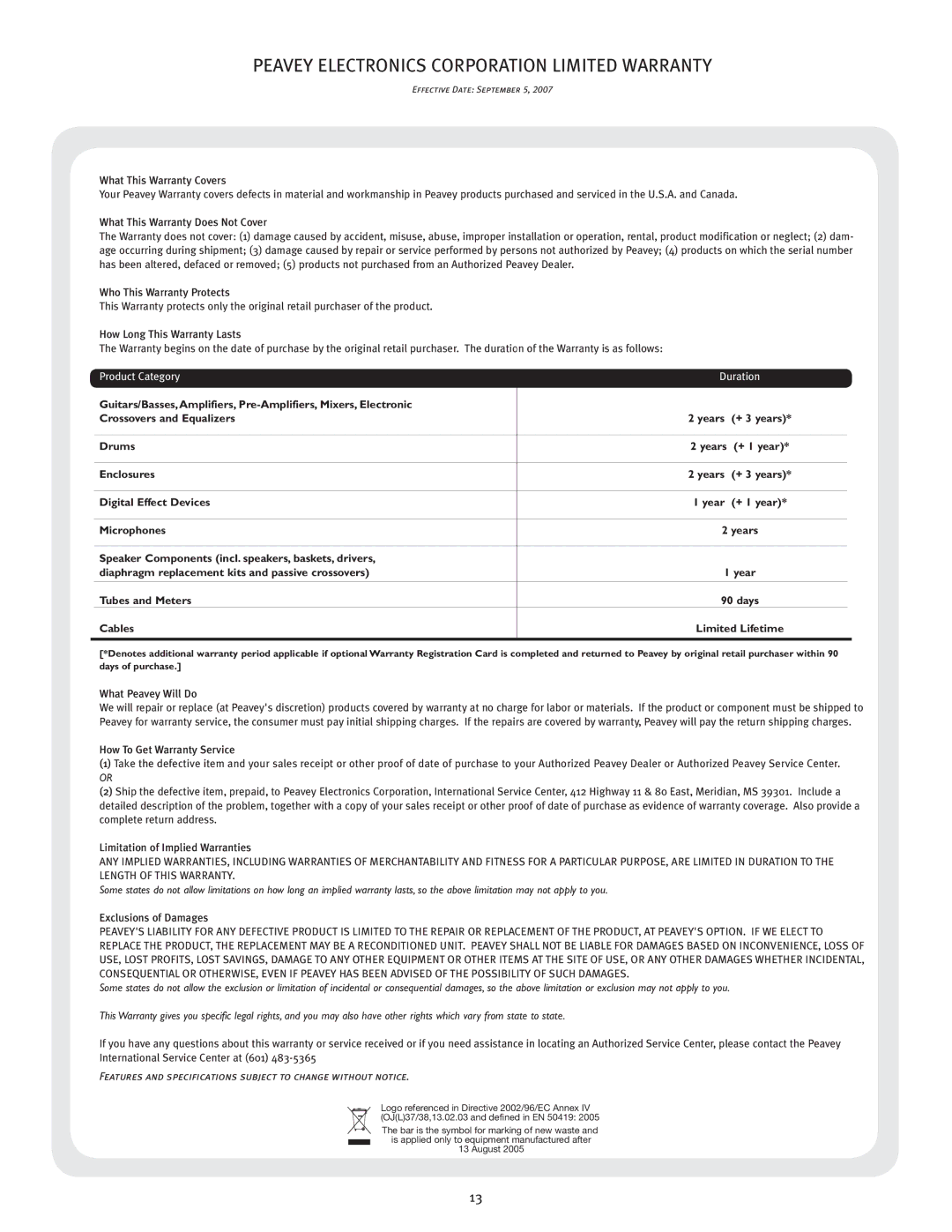6505 specifications
The Peavey 6505 amp head has emerged as an iconic staple in the world of high-gain guitar amplification, cherished by rock and metal musicians alike. Known for its aggressive sound and robust build quality, this amp addresses the needs of players desiring powerful tone and versatility.One of the main features of the Peavey 6505 is its dual-channel design. The two channels, labeled as Lead and Clean, allow musicians to seamlessly switch between a pristine clean tone and a searing, high-gain drive. The Lead channel is renowned for its rich, saturated distortion, making it perfect for heavy riffs and solos. It offers a three-band EQ, allowing users to sculpt their tone with precision.
The Peavey 6505 is powered by four EL34 tubes in the power section, coupled with a pair of 12AX7 preamp tubes. This tube configuration plays a crucial role in delivering the signature Peavey tone, characterized by massive low-end response and sharp highs. The amp's power output, with 120 watts of tube-driven power, ensures that it can fill even the largest venues with rich harmonics and clear articulation.
Another key technological advancement in the 6505 is its resonance control knob. This feature enhances the amp’s responsiveness by adjusting the low-end frequencies, allowing players to achieve a tighter or looser sound based on their preferences. Additionally, the Presence control adds more bite to the high frequencies, enabling players to tailor their tone for different playing styles.
The Peavey 6505 also includes an effects loop, which is an essential feature for integrating pedals and other effects into one’s setup. This allows musicians to maintain the integrity of their sound while utilizing various effects without compromising the amp's tonal character.
Durability and reliability are hallmarks of the Peavey brand, and the 6505 follows suit with a rugged construction designed for the rigors of live performance. The sturdy chassis and high-quality components ensure that this amp can withstand the demands of extensive touring.
In summary, the Peavey 6505 is more than just a high-gain amplifier; it is a versatile tool that allows musicians to explore a wide range of tones while delivering exceptional sound quality. Its powerful features, robust construction, and signature tone continue to make it a favorite among guitarists looking to push the boundaries of their sound.

